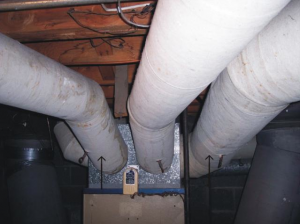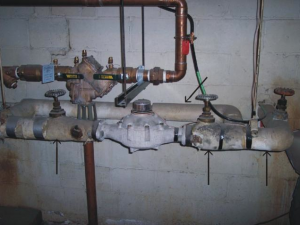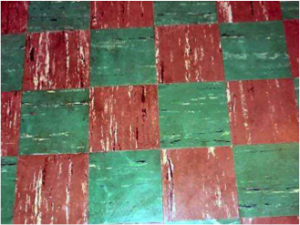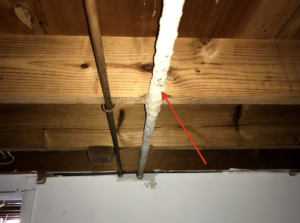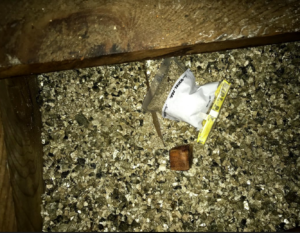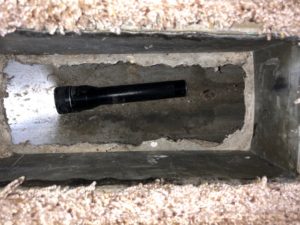Asbestos Inspection and Consulting
Asbestos is a state regulated hazardous material. Only professional and licensed experts should consult on asbestos. The asbestos industry is regulated by the EPA and State of Michigan. Call or Text Healthy Homes to schedule an asbestos consultation. At Healthy Homes, we provide an unmatched professional approach to your environmental projects and cleanup.
What is asbestos?
Asbestos is a mineral found mixed into several thousand building products. Asbestos is a naturally occuring mineral that is mined and manufactured into materials for building homes. There is no safe level of asbestos exposure.
What to do with asbestos?
Do not attempt to remove asbestos or any material you may suspect to be asbests. Accidental inhalation of asbestos fibers can be harmful and cause death!
The best idea is to call an expert on asbestos. Call or Text 248.962.6095
Asbestos Pipe Insulation Removal
Watch this video below for an overview of an asbestos pipe insulation removal project. This project was completed using the glovebag method for a safe and proper asbestos removal.
Asbestos has been used in a variety of household and building materials since the 1850's. Asbestos has been shown to cause lung cancer in people exposed to its microscopic fibers. Asbestos, when disturbed, is easily inhaled and ingested.
Once inhaled, the tiny fibers stay lodged inside your body tissue, increasing your chance of developing serious illnesses. This is why asbestos removal is to only be performed by trained and experienced professionals.
Asbestos was put into over 3,000 products. The best way to confirm a material is asbestos is to perform an inspection and take samples for asbestos testing. Asbestos has been used in products for fire protection, insulation, and increased strength. It can also be found in various types of:
- Vinyl 9"x9" and some 12"x 12" floor tiles
- Octopus gravity furnace and HVAC duct work
- Duct Tape, HVAC Heat Shield, Furnace Gaskets
- Wall and Ceiling Insulation
- Roofing, Shingles, and Siding
- Cement
- Sub-Slab Transite Ductwork
- Furnace Insulation
- Boilers and Steam Boiler Pipe Insulation
- Linoleum Sheet Flooring
- Vermiculite Attic Insulation (click here for more on vermiculite)
- Door gaskets and Fire Doors
- Patching compounds
- Textured paints
- Plaster
- Ceiling acoustical material
- Stove insulation
Asbestos Testing
There was extremely heavy use of asbestos in homes built between 1920 and 1980. It's was plentiful and versatile with properties of tensile strength, fire resistance and durability. Its use has declined since the 1970′s. However, a phased-in ban by the Environmental Protection Agency (EPA) of most asbestos products did not culminate until 1996. A total ban of asbestos containing materials is still not in effect! Below is a gallery of images of common asbestos materials in homes and buildings.
NEVER remove or repair asbestos-containing materials yourself! Dangerous asbestos fibers are released into the air when the material is banged, rubbed, handled or taken apart. It is especially important that you do not dust, sweep or vacuum particles suspected of containing asbestos. The EPA insists that, for your safety, this should only be done by trained contractors. If you think your home may contain asbestos-based products, contact Healthy Homes for an evaluation. Please review the standards and warnings for removing Asbestos yourself or hiring a Contractor that doesn’t follow EPA guidelines. Click here to read more about hiring an asbestos abatement company.
The EPA provides the following list of questions for selecting a safe asbestos removal contractor. We will always answer YES to each of these questions!
- Are you certified? (ask to see the certificate)
- Have you and your workers been trained?
- Do you have experience removing asbestos from homes?
- Will you provide a list of references of people for whom you have worked with asbestos?
- Will you provide a list of places where you have worked with asbestos?
- Will you use a HEPA negative pressurized containment during the abatement process?
- Will you use the “wet method” (water and detergent)?
- Will you use polyethylene plastic barriers to contain dust?
- Will you use a HEPA filter vacuum cleaner?
- Will your workers wear approved respirators?
- Will you properly dispose of the asbestos and leave the site free of asbestos dust and debris?
- Will you use independent air analysis for final air clearance testing?
- Will the contractor provide a written contract (and scope of work) specifying these procedures?




